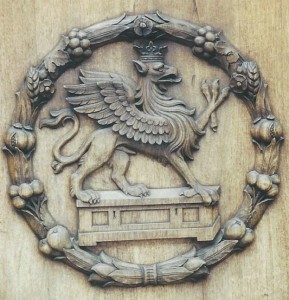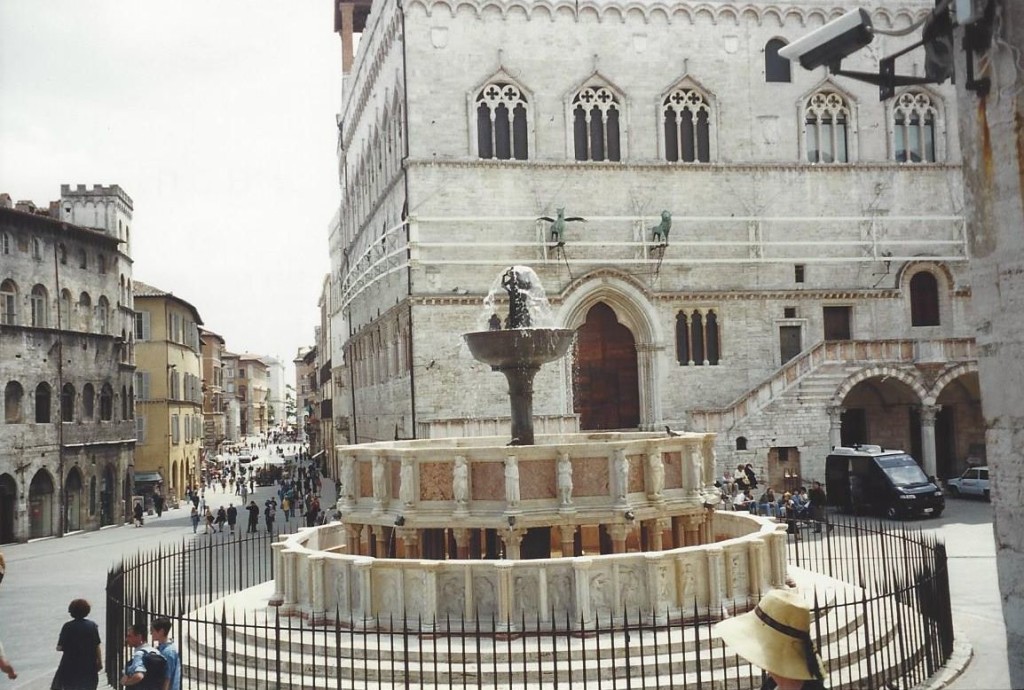Casual visitors usually find Perugia inaccessible and spare with its pleasures. Difficult to get to, to get into, its “personality” is concealed beneath twisting layers of history and confusing labyrinths of streets and alleys (the work of the youthful Raphael in the chapel of the tiny, out-of-the- way church of San Severo; the medieval dwellings of the Baglioni family preserved in the subterranean Rocca like cells in a Piranesi prison). It does not seem to be vulnerable in any way to foreigners, who sometimes wonder why their tour guide has hauled them up to this mountaintop, where they find only a spectacular view and a city in which it is impossible to navigate. It is a solitary and historically duplicitous place, but some people, like myself, seem to be drawn to this aspect of it. It’s a challenge to live here, to work here, but the rewards of doing so are mysteriously compelling, and the city stays with you even when you are far away from it.
The city is difficult and does not pretend to be otherwise. Its beauty, since one feels obliged to speak of beauty when discussing Italian places, is not easy to apprehend, and probably depends as much upon its fundamental austerity as its fountains (it has only one of note, the majestic Fontana Maggiore), its churches (the façade of the unfinished duomo resembles a pillaged castle), or “colorful” outdoor cafés (difficult to find away from the Corso or the Via Baglioni, the only two level streets in the upper town).
And because it is the seat of the Italian University for Foreigners, there are other matters to consider, such as the whine of an Arab song falling from a high window, or the sound of Greek voices arguing in a bar. Tall, dark Africans roam the streets in their brilliantly decorated robes, gesturing earnestly to one another. It is easy to become confused about where, exactly, you are.
The truth is that Perugia is not a simple Italian city. It remains in many ways a cold-eyed survivor of its violent past, as wary of the American rock music that blares from its bars as it is of the native Vespas that buzz furiously through the dark and narrow streets. The city has the power to make you turn uneasily in your sleep, and also to take your breath away by suddenly revealing green vistas of gentle hills, like cards pulled from a sleeve. This power, one has to think, has developed from the exercise, the constant tension, among the multitude of antagonistic contrasts that exist within its Etruscan walls: the ancient, the modern (the Etruscans, say, vs. Perugina baci); the native, the foreign (each with its private ways); the peaceful, the sinister; the light, the dark; the grand space above, the mystery beneath. The excitement of these conflicts works on you: you can easily find yourself falling passionately in love or possibly considering some terrible violence, against yourself or someone else.
In autumn the mornings are lacy with mist and punctuated by bells; by noon the sunlight is hot and clear, the sky a ringing blue. In the evening the western sky turns fiery as the sun drops behind the smoky hills toward the lake of Trasimeno. The old stones of the city seem to breathe in this glow for a few moments, then subside into the ashes of dusk. To the east, over Assisi, the sky turns lavender, and slowly darkens, and darkens. Then on the plain below Perugia the lights appear in the villages, and the city itself emerges glittering on its mountain like a reclining Borgia. The night grows colder. At three in the morning a full moon urges shadows out of the darkness; a bell sounds once, twice, and then, after a moment, a third time. A vast congestion of stars is brilliant above the earth. The streets are silent, the alleys breathe with the presence of what D.H. Lawrence called the “shrouded gods” of the Etruscans.
What could happen here? Anything.
1998. In Perugia.

